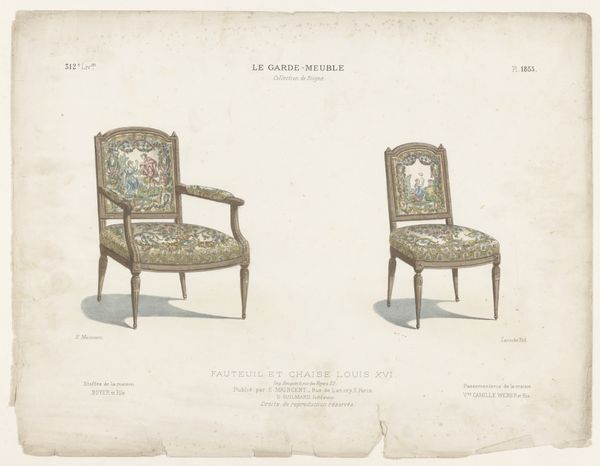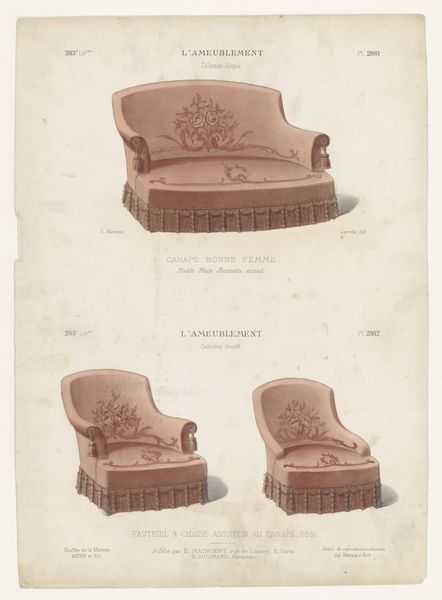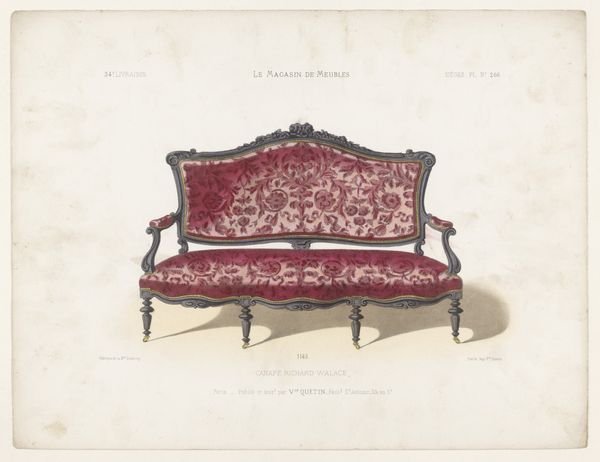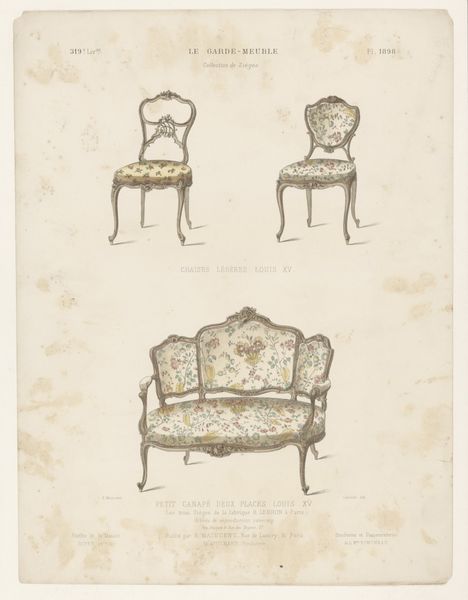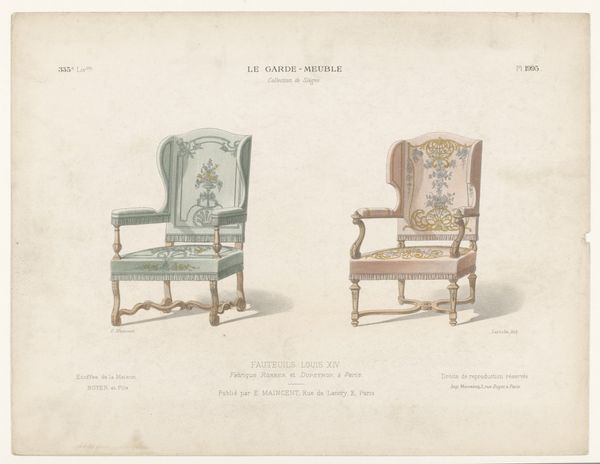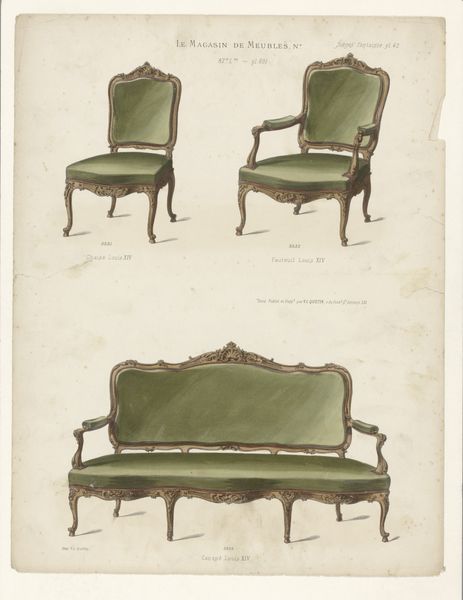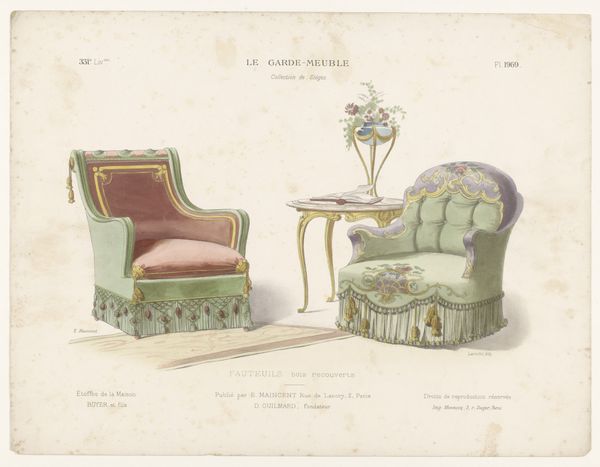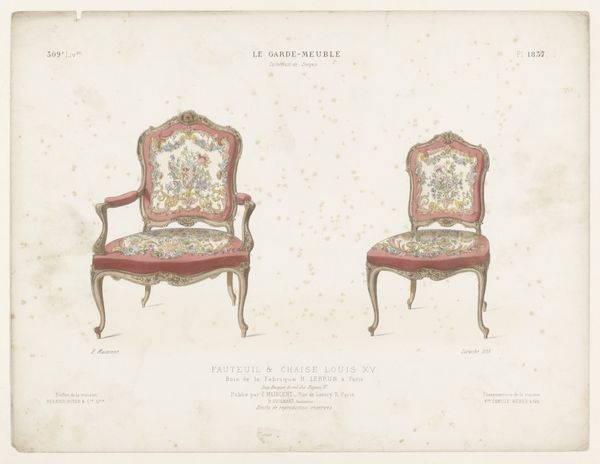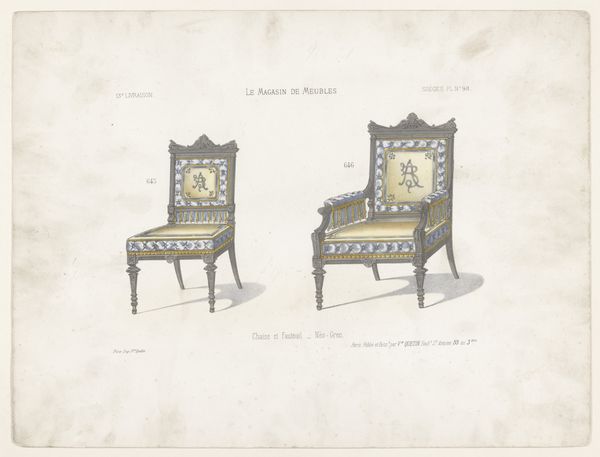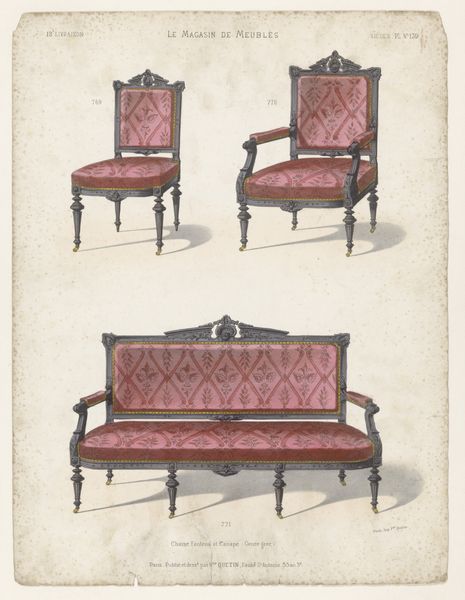
print, engraving
# print
#
history-painting
#
decorative-art
#
engraving
Dimensions: height 360 mm, width 276 mm
Copyright: Rijks Museum: Open Domain
Curator: This print, known as "Twee Stoelen" or "Two Chairs", dates from between 1885 and 1895, and is attributed to Léon Laroche. The technique used is engraving, a testament to the detailed craftsmanship of the time. Editor: Immediately, the chairs speak to me of faded grandeur. There's a palpable sense of history, isn’t there? Those ornate details, the delicate floral patterns... they whisper stories of a bygone era of luxury. Curator: Absolutely. Looking closely at the craftsmanship, it’s evident that these aren’t merely depictions, but rather documents of specific design traditions. The engraving allows us to appreciate the textures and materials—the gilding, the upholstery—that would have signified status and wealth. We see history not only through style but also through the labor of its creation and the elite tastes these items satisfied. Editor: Indeed. And beyond mere representation, I see encoded symbols of power and refinement. Notice how the “Marquise Louis XVI” armchair, at the top, features an open design, an invitation to social interaction. While below it, the “Bergere Louis XVI" displays a medallion on the back, which is visually a symbol of domestic virtue. Both chairs carry very different cultural messages. Curator: An interesting distinction. Consider that decorative arts, particularly furniture design, can act as barometers of socio-economic shifts. By this period, perhaps there's already a yearning to possess what seems impossibly ornate. Engravings like this allowed for wider access to styles usually reserved for the wealthy. These images served not just as inspiration for craftsmanship, but also facilitated their reproduction at different social strata. Editor: And beyond historical and social implications, it strikes me that these chairs could equally suggest both comfort and confinement. Consider what those chambers may have held—conversations, clandestine affairs, social and political machinations all bound to a single seat. Each object contains worlds that open our understanding of the past. Curator: Exactly. Analyzing art is not just observing; it's recognizing material choices, class structures and conditions of labour; each line, pattern and contour echoes with social information. It highlights the means of production and access during this specific timeframe, giving form to both a creative output and consumer habits. Editor: Well, looking at this piece has really amplified the stories objects can tell about society, status, and also intimate personal histories that reverberate still today. Curator: And the enduring fascination with historical styles that continually inspire and reinvent materiality demonstrates our complicated dance with craft, memory and labour.
Comments
No comments
Be the first to comment and join the conversation on the ultimate creative platform.
